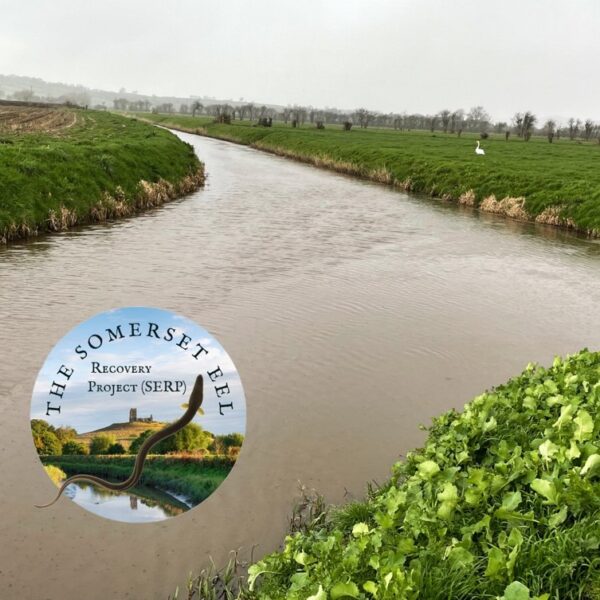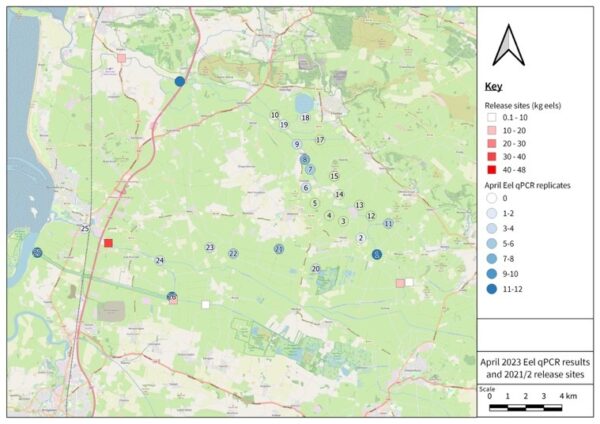A DNA sampling project seeking to gather information on eel numbers in the Somerset Levels has found the fish absent from large parts of the area, with man-made barriers likely to be a large part of the problem, ENDSreport wrote.
Eel experts say they are shocked to find no evidence of the animal in the network of drainage ditches that make up its traditional habitats in the Somerset Levels, which once teemed with the critically endangered fish. DNA sampling by the Sustainable Eel Group and Somerset Eel Recovery Project (SERP) in the drainage ditches found no traces of eel DNA.
The Guardian reported that experts believe barriers in the wetlands are the reason there are no eels in the drains of the Levels. Using the DNA sampling company NatureMetrics, the eel campaigners took water samples that were filtered and tested for fragments of eel DNA.
Andrew Kerr, chair of the Sustainable Eel Group, said: “We were very, very surprised to see no evidence of European eel. Off the River Axe, there is an incredible network of drains built by man to drain the Somerset Levels. And we thought we would find eels throughout the whole area.”
While they found eels in varying quantities in the rivers feeding the Levels, there were none in the complex drainage systems of the wetland areas.
“In the drainage ditches, we found no eel DNA. The river simply isn’t feeding the eels into the levels, because they cannot cross the barriers,” said Kerr.
Kerr is not calling for all the barriers to be removed and the farmland flooded, but for the water network to be made more eel-friendly with solutions to the barriers. “Nobody would expect you to turn it into a wilderness because you’d lose all that productive farmland. But what we have to do is find solutions to the blocked migration pathways.”
Ali Morse, water policy manager for The Wildlife Trusts, told the Guardian: “The Somerset Levels have been a stronghold for eels for thousands of years, but illegal fishing and the loss of wetland habitat have contributed to catastrophic declines. It is estimated that populations have decreased by as much as 90% since the 1980s.”
SERP tweeted to stress that “there are eels present in some of the watercourses – its just that in our Wedmore study it showed no presence of eel DNA in some of the samples that we took”.
Other work is taking place in the area too, with Natural England funding WWT to carry out a landscape scale survey of eel distribution across the Somerset Levels and Moors.

